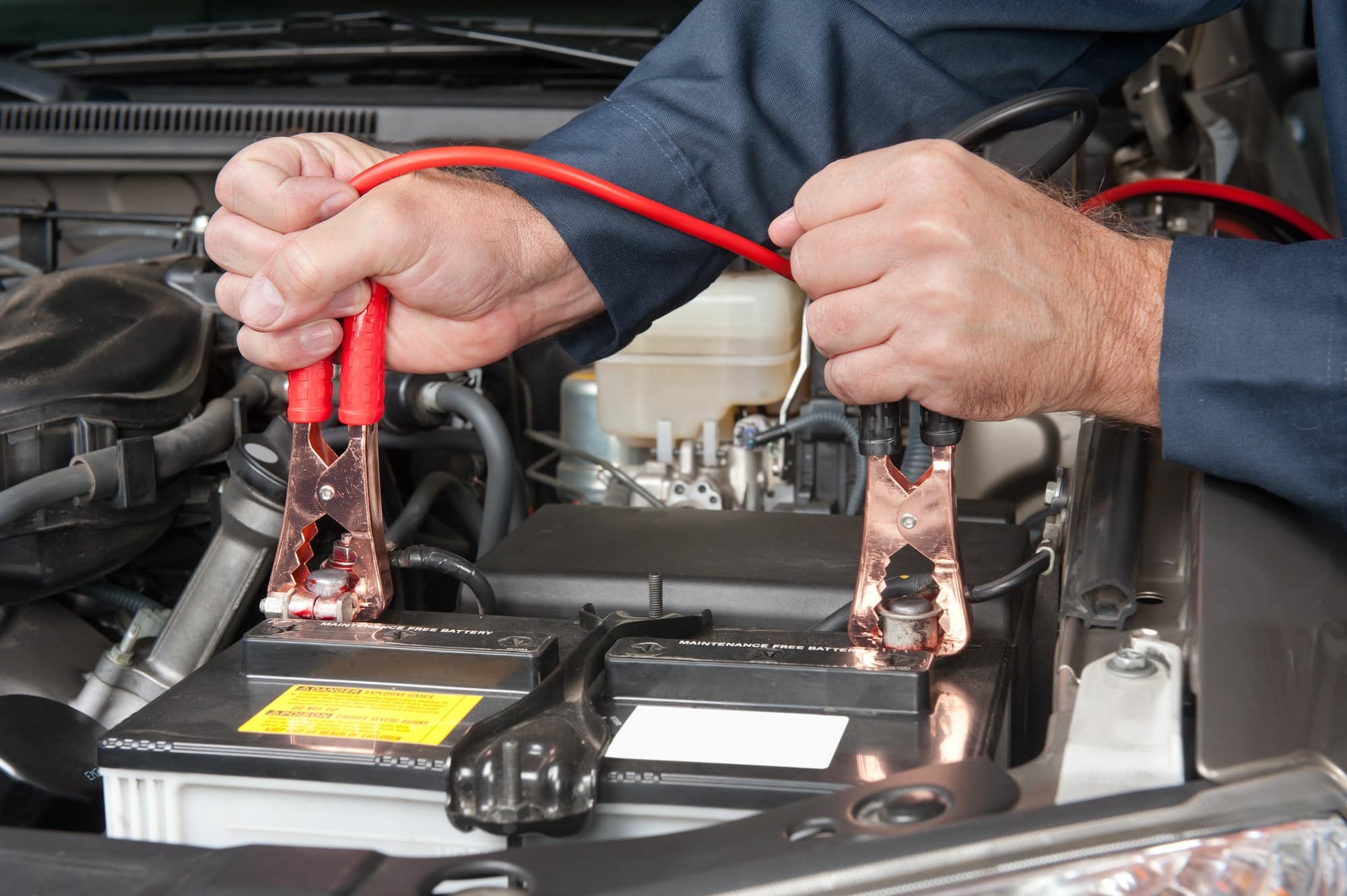Do you need to check your brake fluid but are unsure how to start? Accurate brake fluid levels are essential for safe driving, and in this article, we will provide you with a precise method for checking brake fluid. We’ll cover the essentials, offering clear directions for a swift and secure check. Let’s dive into the process, ensuring your vehicle’s braking system remains dependable.
Key Takeaways
- Brake fluid is essential for efficient braking, with different types based on glycol-ether or silicone, each with specific properties and DOT classifications to meet varying vehicle requirements.
- Maintaining brake fluid levels is critical for vehicle safety; signs of low levels include a spongy brake pedal and warning lights, with professional service recommended for fluid changes at least every two years or as per individual vehicle requirements.
Understanding Brake Fluid and Its Importance
Brake fluid is more than just a component of your vehicle’s braking system; it’s the driving force behind efficient braking. It amplifies the braking force by transferring the force exerted on the brake pedal into pressure within the vehicle’s braking system components.
When you press or push the brake pedal, the brake fluid transmits hydraulic pressure to the brakes, activating the brake pads or shoes to slow the vehicle through friction.
Most brake fluids are glycol-ether-based, which is designed to maintain a constant viscosity across various temperature ranges. This characteristic is crucial for efficient operation in advanced braking systems such as ABS, traction control, and ESP.
High temperatures can increase the risk of decreased braking efficiency or even complete brake failure. Brake fluid’s boiling point, especially when dry and after absorbing moisture (wet boiling point), is a crucial indicator of its ability to function effectively under high temperatures and avoid brake failure.
Brake fluid absorbs moisture from the air, which can lower its boiling point and cause it to boil at lower temperatures, potentially leading to brake failure. Therefore, regular brake fluid monitoring and replacement are essential to mitigate these risks.
Types of Brake Fluid
In the UK, there are several types of brake fluid available, each with its own specifications and recommended uses. The most common types include:
- DOT 3: This is a glycol-based brake fluid that is compatible with most braking systems. It has a lower boiling point compared to higher DOT-rated fluids, making it suitable for regular driving conditions. However, it requires more frequent replacement.
- DOT 4: Similar to DOT 3 but with a higher boiling point, DOT 4 brake fluid is suitable for vehicles subjected to heavier loads or higher temperatures. It offers better performance under these conditions but still requires regular replacement.
- DOT 5: Silicone-based DOT 5 brake fluid is less hygroscopic than glycol-based fluids, meaning it absorbs less moisture from the air. It is typically used in classic cars and motorcycles, as it is less damaging to paintwork and offers more stable performance over time. However, it is not compatible with anti-lock braking systems (ABS) and requires careful handling during installation.
- DOT 5.1: This is a glycol-based brake fluid with a higher boiling point than DOT 4. It is suitable for high-performance vehicles or those subjected to extreme conditions. It is compatible with ABS and electronic stability control (ESC) systems and offers excellent performance under heavy braking.
It is crucial to use the brake fluid your car manufacturer recommends to ensure the best braking performance and comply with the recommended replacement intervals. It is also advisable to use the same brake fluid already in the system and avoid mixing different types. This is especially important since DOT 5 fluids are incompatible with other types due to their unique chemical composition.
Steps to Check Brake Fluid in Your Vehicle
To inspect brake fluid levels, follow these steps:
- Locate the Reservoir: The brake fluid reservoir is usually located at the rear of the engine bay (which you can access by opening the bonnet), either on the driver’s or the passenger’s side. You can consult your vehicle’s owner’s manual for the exact location.
- Identify the Reservoir: Look for a semi-translucent plastic container with a black screw-on lid. It may have a yellow warning label that mentions “brake fluid” or a similar indicator. Most reservoirs will have markings such as “MIN” and “MAX” lines on the side to indicate the acceptable fluid level range. The maximum marker (the “MAX” line) shows the highest safe fill level—do not fill above this line to avoid potential damage or reduced braking performance.
- Visual Inspection: In most modern UK vehicles, you can assess fluid levels without opening the reservoir. Simply look at the markings on the outside of the reservoir and ensure the fluid is between the “MIN” and “MAX” lines.
- Open the Reservoir: If the markings are obscured or your vehicle is an older model, you might need to open the reservoir cap for a clearer view. The reservoir cap seals the brake fluid reservoir, preventing moisture contamination. Do this carefully to avoid contamination. Wipe the cap clean with a lint-free rag before removing it. Look inside and ensure the fluid level is between the markings.
Signs of Low Brake Fluid Levels
Generally, common indications of low brake fluid include:
- a spongy brake pedal
- dirty fluid
- a burnt smell
- dropping levels during visual inspection
Spongy brakes happen when the brake fluid level gets too low, causinf air can be drawn into the system. If unaddressed, you might be risking a complete loss of braking ability. A spongy brake pedal or dirty fluid can also be a sign of other underlying brake issues like worn brake pad. These signs indicate it is important to have your brakes checked.
A significant drop in the brake fluid level is an essential sign for a brake fluid change and can suggest the presence of a leak in the braking system or worn brake components. If you observe such signs, you should seek professional assistance and have your brakes checked by a qualified mechanic to ensure your vehicle has enough brake fluid and maintains its safety.
How to Top Up Brake Fluid Safely and Accurately
Before you add brake fluid, make sure the vehicle is parked on a flat surface and the parking brake is engaged. This precaution helps you get an accurate reading of the fluid level. Use caution when handling brake fluid, as spills can damage your vehicle’s paint and should be avoided.
If the brake fluid level is below the ‘low’ marker, carefully add brake fluid to top it up. You should pour the brake fluid slowly and steadily, using a funnel or by hand, to avoid spills and contamination. If a spill does occur, clean it immediately to protect the vehicle’s paint.
Clean and Close the Reservoir
Before opening the brake fluid reservoir, it is necessary to clean the outside to avert any potential contamination of the brake fluid. If the brake fluid is spilt on the vehicle or engine compartment, wipe it off with plenty of water to prevent corrosion.
After adding brake fluid, ensure the fluid level is correct and has not dropped. Then, securely close the reservoir lid to prevent fluid loss and contamination. This simple yet crucial step can significantly impact the longevity and efficiency of your braking system.
When is the Time to Change Your Brake Fluid?
Brake fluid can absorb moisture from the air and become contaminated over time, degrading its performance and leading to a spongy brake pedal feel. If the brake fluid appears dark in color, it is a sign of age or contamination and should be replaced.
Vehicle manufacturers commonly suggest changing brake fluid at a minimum interval of every two years. However, the exact frequency can vary based on your vehicle’s make, model, and driving conditions.
For professional automotive services, including a thorough brake fluid change, trust Sovereign Motor Engineers for expert car service.
Sovereign Motor Engineers: Your Trusted Partner in Car Maintenance
Sovereign Motor Engineers is a reliable source for vehicle services in the UK. As a family-run business, we have been providing satisfactory services since 2010. Our car garage, located in Tonbridge, is staffed by experienced professionals and qualified technicians who are capable of performing diagnostics and repairs to the highest standards.
We offer comprehensive services, including diagnostics, repairs, and car servicing in Tonbridge, and various service packages to keep your vehicle running optimally. Checking and topping up brake fluid is a job that can be performed by our professionals at the garage.
We cater to customers with different makes and models of cars. Our commitment to consistent customer satisfaction reflects the trust and loyalty we have earned in the Tonbridge area. Visit our garage today!
Why Choose Us?
- Friendly and Professional Approach
- Experienced Professionals
- Expertise in Classic Cars
- Consistent Customer Satisfaction:
Expertise in Classic Cars
Our team at Sovereign Motor Engineers boasts over a decade of experience in the classic car industry and is renowned for our expertise. We provide reliable gearbox and clutch replacements for classic cars and are acknowledged for our meticulous work. Our profound experience in servicing and repairing classic and vintage cars, including notable brands such as Alfa Romeo, Lagonda, and Triumph, sets us apart in the car servicing industry. With excellent customer service, we are known for our honesty, efficiency, and expertise, making us a top choice among classic car enthusiasts.
Contact us today to schedule an appointment and experience the difference with Sovereign Motor Engineers.
Frequently Asked Questions
How can I tell if my brake fluid level is low?
During a visual inspection, you can tell if your brake fluid level is low by checking for signs such as a spongy brake pedal, dirty fluid, a burnt smell, or dropping levels. Keep an eye out for these indicators to ensure your brake fluid is at a safe level.
What is the role of brake fluid in my vehicle?
Your vehicle’s brake fluid amplifies the braking force by transferring the force exerted on the brake pedal into pressure within the braking system components, slowing the vehicle through friction. It plays a crucial role in ensuring the effectiveness of your vehicle’s braking system.
How often should I change my brake fluid?
You should change your brake fluid at least every two years, but the frequency may vary depending on your vehicle and driving conditions.
This recommended interval is intended as a general guideline; always consult your owner’s manual for specific recommendations for your vehicle.
Can I mix different types of brake fluid?
No, mixing different types of brake fluid is not recommended, as it can cause compatibility issues, especially with DOT 5 fluids.
Additionally, brake fluid should never be mixed with oil, as this can cause severe damage to the braking system.
Conclusion
Maintaining proper brake fluid levels is crucial for ensuring the safety and efficiency of your vehicle’s braking system. By understanding the importance of brake fluid, the types available, and how to check and top up the fluid safely, you can help prevent issues such as spongy brakes or brake failure. Regular maintenance, including brake fluid checks and replacements, is essential for optimal vehicle performance and your safety on the road.
For all your car maintenance needs, including brake fluid checks and replacements, trust Sovereign Motor Engineers. Our experienced professionals and passion for vehicles ensure top-notch service and customer satisfaction. Contact us today to schedule an appointment and experience the expertise of Sovereign Motor Engineers.


